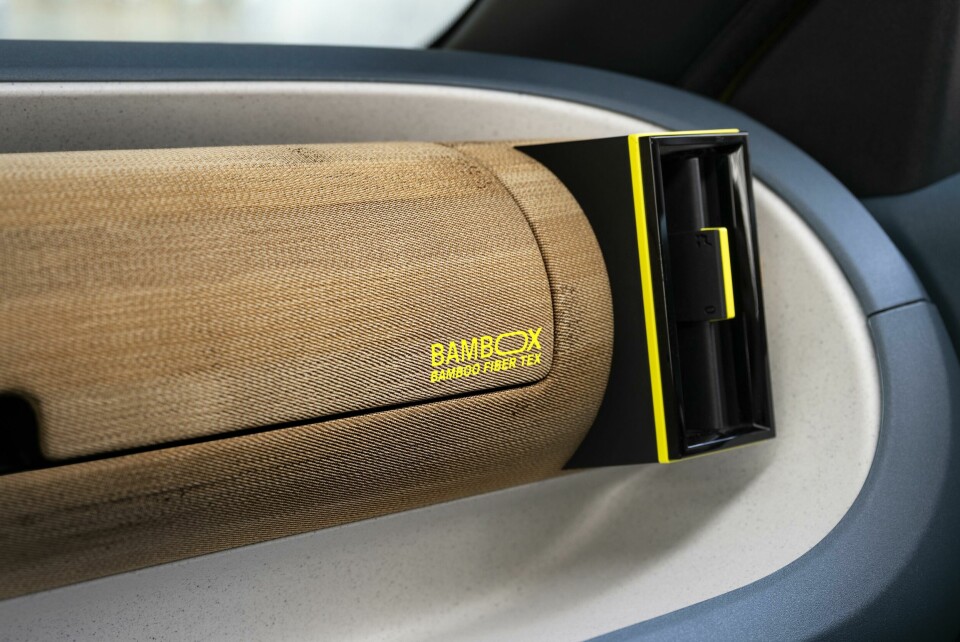
Interior Motives: Fiat Grande Panda
The 2024 Fiat Grande Panda is part of a new family of vehicles that lean into the legacy of the very first one, but in intelligent new ways
When Fiat revealed its quintet of new Panda concepts digitally on the first press day of the ill-fated 2024 Geneva Motor in late February – away from the physical Swiss event that its wider parent Stellantis Group had snubbed – there were many striking exterior designs to dissect. But there was only one highly conceptual interior – featuring a sparse layout and dashboard, stringback seats and speckled, recycled-looking seat bases.
Forward-wind to the early summer and a gentle drip-drip of production exterior images followed, showing the first model of the new pack – the Grande Panda – before finally, the whole car was revealed in production form, replete with fully-fitted cabin, at the Italian marque’s 125th Turin birthday party in mid-July.
Luckily, before then, Interior Motives had secured an exclusive chat with both head of design François Leboine and his chief interior designer Michele Longo, about the new Panda family and their approach to interiors specifically.
Much has already been said about the exterior design influence of Giorgetto Giugiaro’s boxily-pragmatic Panda Mk1 on the new Grande Panda, but the new interior has less of a connection to the original Panda cabin and more of a link to the recent 2019 Fiat Centoventi concept. Indeed, chief interior designer Michele Longo was involved in both the Centoventi and Grande Panda, so is well placed to compare the two.
“The designs, more or less, have the same principle,” Longo begins. “To keep it simple, Italian and upgradeable. We used modern shapes and treatments and expanded the concept of the Lingotto [loop]. Before [on the Centoventi] it was only around the screen, but [on the Grande Panda] there’s an evolution, with some elements on top of what we developed for the Centoventi.”
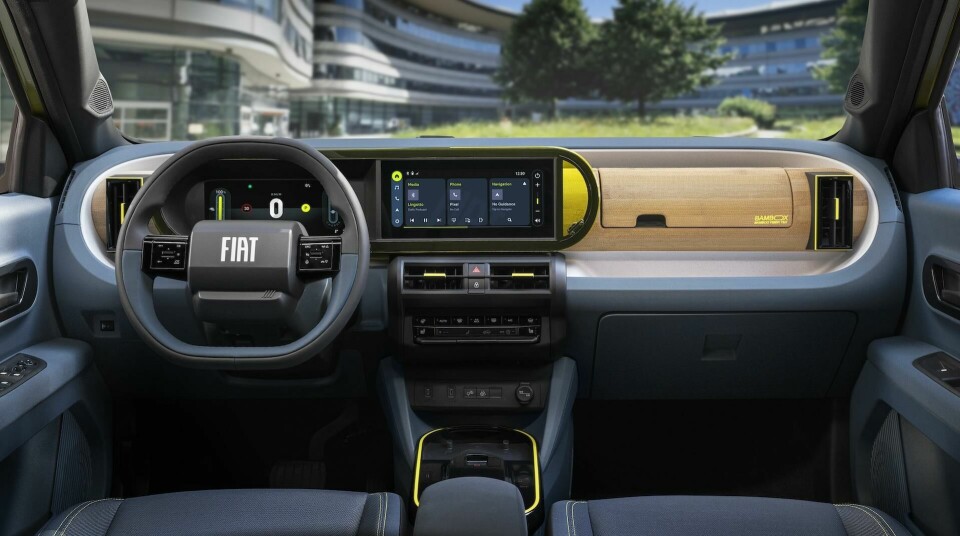
This loop motif – in reference to the similar-shaped rooftop test track of Fiat’s famous early 20th century and Lingotto factory which still stands – is repeated a few times around the cabin beyond the touchscreen frame. It’s discernable around the centre console, where the auto gear selector and a smartphone charging pad sit, and also around the full-width dashboard and interior door handles. Accented in pinstripe contrast yellow on the press pictures, the main loop around the right of the centre touchscreen also boasts a small Panda Mk1 model car silhouette making its ascent. It’s a playful element probably only spotted at a second glance, making for a neat surprise-and-delight feature while acknowledging the model’s long history without Panda-ing to it too obviously (sorry, couldn’t resist)!
Inside this loop sits a 10-inch digital driver display and a 10.25-inch centre screen to keep things firmly early 21st century, while on the passenger-side, a top-hinged box is clad with textured and natural-looking sustainable bamboo fibre. Together with bright yellow accent edging to the adjacent, vertically rectangular air vents, the combination of colour and materials creates a gentle and homely ambience. The car is practical too – as the Panda was always meant to be – with plentiful storage space. Fiat claims 13 litres inside the aforementioned bamboo dashboard box, with a further 361 litres underneath the rear hatch.
There has also been some pragmatic consideration given to the charging cable user experience for the EV version of the Grande Panda. Instead of the current norm of having a loose and long charging cable that can pick up dirt and doesn’t always fold away easily under the front or rear load bay, the Grande Panda’s 7kW AC-compatible coiled cable is integrated with the car and deploys from behind a flap within the front pixel mask to hopefully make the charging connection process tidier, cleaner and quicker. At the end of the charge, the cable promises to coil back into its hole just as easily. Fiat’s press department says it’s a ‘first’ for the market.
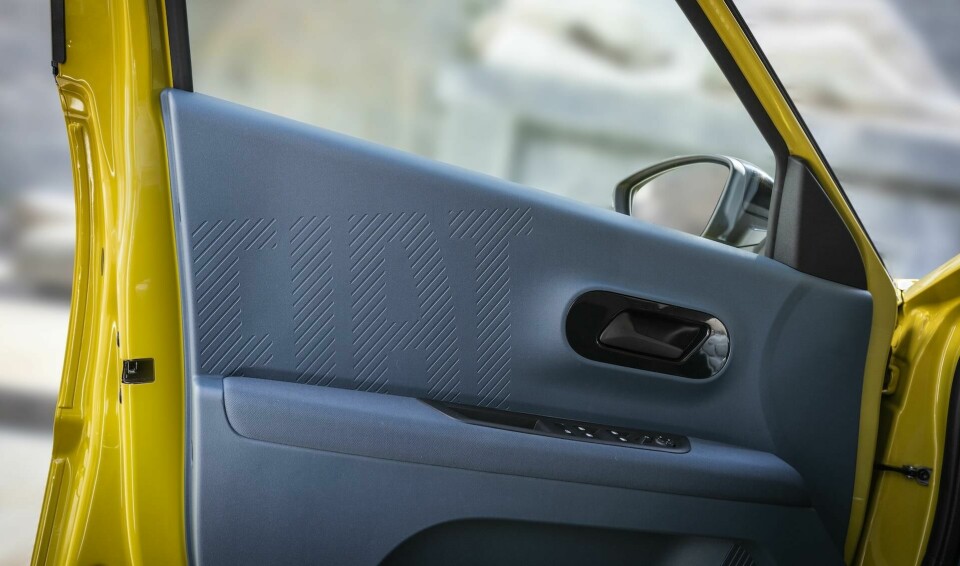
That’s not to say branding isn’t also crucial to the Grande Panda’s product experience. The ‘Fiat’ and ‘Panda’ word marks are rendered in many places and styles on the car, most notably in the giant graphic all-caps ‘PANDA’ word mark stamped right across the lower exterior body side panels. But there are more stealthy interior examples too, from the large, diagonally hatched, angled and debossed ‘FIAT’ logos on all the interior door cards behind the door handles and also more subtly, with the ‘Panda Made With Love In Fiat’ captioning tucked into the upper horizontal pathway along the square-padded front seatbacks. Elsewhere, the Lingotto loop graphics continue in the shape of the fixed front headrests. Whether viewing from afar or sitting inside, onlookers and passengers should be in no doubt which new car model this is, or indeed which brand is behind its design.
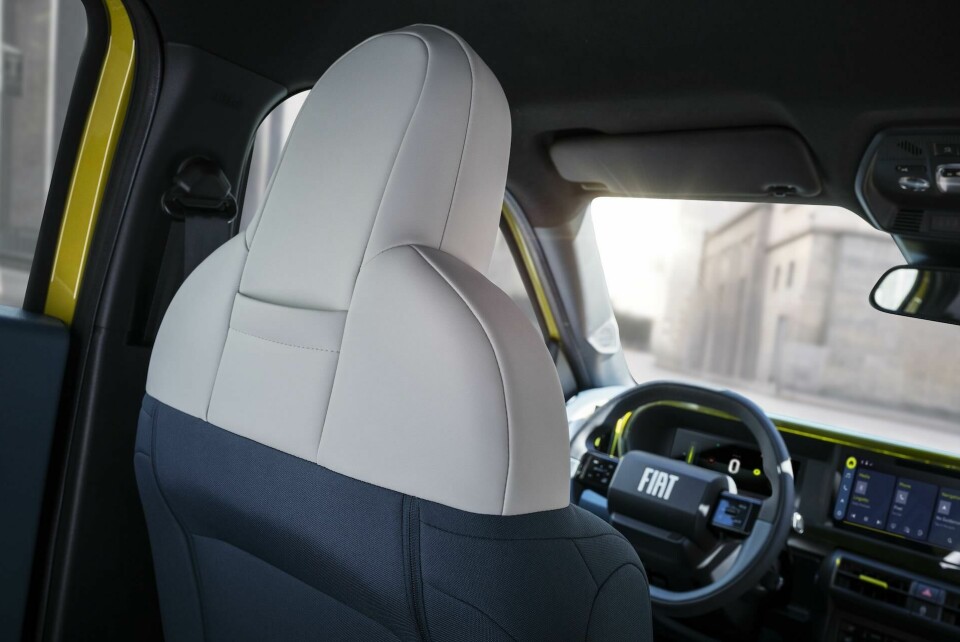
Its user interface software won’t be test-able until early media drives later in 2024, but looking much further ahead, Fiat’s Leboine doesn’t discount the idea of eventually dispensing with the currently ubiquitous touchscreens and their often under-performing software. “You could imagine just a base screen or even no screen at all and interacting with your car via voice control. Customers can upgrade the technology depending on their means and over time. That’s something that is important for us. We imagine this car can follow the evolution of technology and be changed and upgraded and stay current after five years or 10 years because of its embedded technologies.”
The design team were keen on the Grande Panda’s interior being more physically customisable and modular than before too, not only to meet customer demand for personalisation, but to assist with the product’s longevity as well. “From the same technical hub we have the possibility to plug in different technologies and parts,” Leboine explains. “This is the main concept and the same idea as the International Space Station. We can make an affordable version or a more premium one, by changing the parts and upgrading the technology, depending on the level of vehicle we want to obtain.”
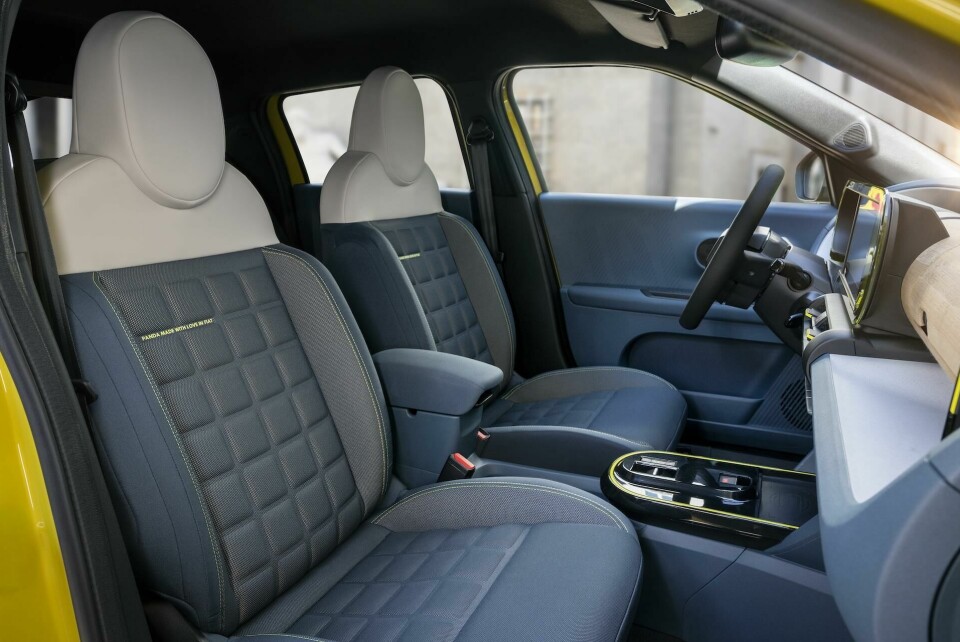
This customisable approach is an interior car design trick that’s been tried with mixed results many times before and by numerous brands. At their worst, such options can look a bit shabby quite quickly, in terms of tolerances and how they fit together once added and removed a few times. How is Leboine intending to avoid such a scenario with the Grande Panda and has he got the right designers to make them?
“It’s true that if you want to develop accessories, you need a different type of designer, which is actually the chance we have at Fiat, because we have a type of designer that is not the classic designer that just makes shapes,” Leboine muses.

“Our designers are more into product design and an approach of concepts with embedded functionality. Developing accessories is quite difficult, but not because of the functionality itself. First of all, there’s the durability of the elements we create, especially in the automotive industry, because we know we cannot offer things that are too cheap or fragile, because they are supposed to last at least something comparable to the life of the car. And the second thing is the automotive regulations we have to pass. All these accessories have to respect the automotive industry constraints and regulations. These are the two topics we have to deal with when we develop accessories.”
Leboine is well-placed to impart recent experience in this field though, via his previous role as head of concept cars at Renault when the new 5 was just an internal project, but which also promised many interesting and robust accessories.
The Grande Panda is based on the same platform as Stellantis Group sister products including the Citroen C3 and Opel Frontera and will be offered in both a full-electric version with a 44kWh battery and a 195-mile range from £22,000, or a hybrid option set to start at just below £20,000. The global product goes on sale in continental Europe first in the autumn of 2024, then the UK market soon after, followed by the Middle East and Africa. Fiat also says a further three production cars from this new Panda family will launch at the rate of one vehicle every year until 2027 and judging by the concepts shown earlier in 2024, should include slightly larger crossovers and pick-ups, although set within compact footprints, suitable to the brand.
Times have certainly moved on since Giugiaro’s 1980 Mk1, in both customers’ physical size and their expectations, but the new 2024 Grande Panda has managed to embody the original Panda’s charm, while adding new tech and style. And if the new Panda models are as well-accepted in the market as they have been in concept form, Fiat’s fortunes should become much less reliant on the already electrified and revamped 500 and 600, and more well-rounded as a range. Which will be real progress for the Italian brand.




















